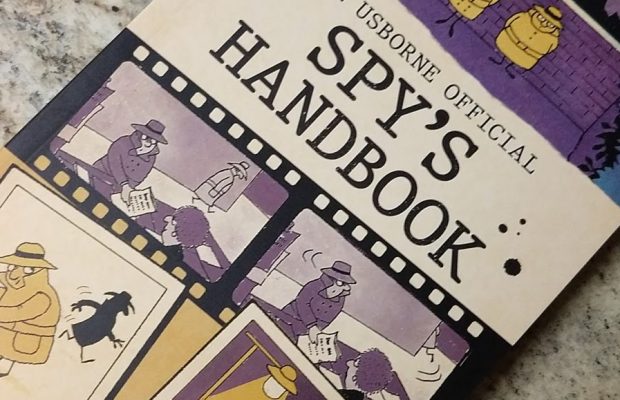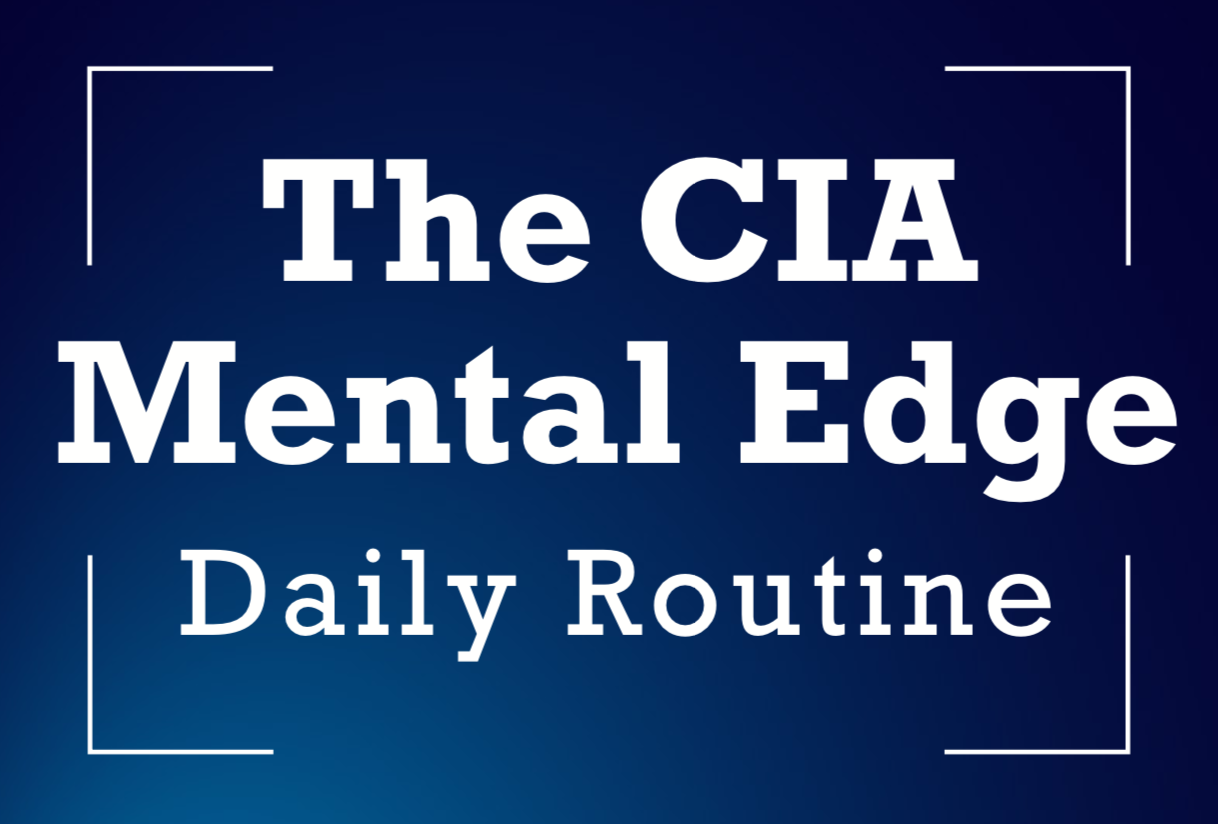Greetings Everyday Spy,
I am humbled by your support for the #EverydaySpy newsletter and the Everyday Espionage Podcast.
Sometimes you send short messages offering me encouragement or feedback. Other times you send likes and comments via social media. But my favorite feedback comes when people email me directly at info@EverydaySpy.com.
Some people think email is dying – I could not disagree more.
Unlike social media and direct messaging, email is the most personal form of digital communication. It is intentional, uninterrupted written word.
At one point humans wrote on stone walls to communicate with one another; then they used ash on dried leaves; then ink on pressed paper; and now its colored pixels on a white background.
As long as people read, there will always be professional and personal value in thoughtful written correspondence.
There is incredible power in writing. And email is the modern-day ink and paper.
Business are debating whether to invest more in direct messaging (like Facebook Messenger or WhatsApp) or build chatbot services like you find on many box-store websites.
They measure response rates, conversation performance, risk/gain ratios and sunk costs.
But elite businesses keep deciding in favor of email. Why?
There is a big difference between chatbots and emails… people.
Every email originated from a human being. Even if the email is copied/reproduced, each word was crafted with human effort.
Chatbots are machines – algorithms referencing indexed information and communicating using logic-based code and artificial intelligence.
Even when marketing gurus and young generations bash email as old and outdated…
The facts paint a clear picture about the value of email:
- There are 3.9 billion active email users today – 2x times the current worldwide social media users.
- Email use grows by 3% every year, projected to hit 4.4 billion users by 2023.
- 86% of professionals say email is their preferred method of official correspondence.
- 72% of buyers prefer contact with brand/stores via email more than any other method.
- 66% of online shopping originates from an email.
- Email activity among 12-17 year olds is growing 25% faster than social media or chat use in the same generation.
You cannot keep people away from long-form written content; no matter their age, their race, or even their reading level.
CIA taught me that all people value meaningful, written communication.
The person that communicates openly, honestly and easily is the person who will win:
- Win attention
- Win trust
- Win loyalty
And when losses are counted in American lives, we take winning very seriously.
Elite intelligence agencies use three techniques to master clear, effective written communication:
- Bold Key Points
- Bottom Line Up Front (BLUF)
- F-Pattern Reading
I used these writing techniques to win operational support from Presidents and Congress when I was at CIA.
I used them to win promotions, projects, and praise from shareholders and CEOs in corporate America.
Even now I use them every day to win new business, new readers, and new friends.
But one person winning isn’t enough – I want you to win along with me.
Here is how you write like a spy:
- Bold Key Points
The human eye is drawn to bold lettering.
Bold sentences, especially when paired against normal font, create a natural hierarchy for the eye and make it easy for the brain to index, reference, and review information.
For this reason, every professional written intelligence product in the US intelligence community includes both bold and normal weight fonts.
Whether you are the President reading the President’s Daily Brief (PDB), CIA Director receiving talking points for a Select Committee on Intelligence hearing, or an Intelligence Community (IC) member receiving a memo-for-record, you will find mixed bold and regular fonts to aid in rapid review and information retention.
If you want to see how effective bold key points are, take a look back over this article.
Like all EverydaySpy.com articles, this article is organized and written like a professional intelligence product. I use bold fonts to give readers key points and expand on those key points in regular font afterwards.
When used effectively, bold key points can stand alone as a summary of the entire article.
- A high-value reader can review only the bold text and still understand the entire piece, saving them as much as 90% of the total reading time.
- If a reader wants more information, they can return to a bold key point easily and read the supporting information in normal font below the bold line.
- The brain naturally prioritizes the key points because they are bold, making it easy for readers to retain and recall the information in both short-term and long-term memory.
- Bottom Line Up Front (BLUF)
Professional writing is the exact opposite of academic writing.
Professionals always state the most important information – the ‘bottom line’ – in the first sentence. Every attorney, journalist, doctor and spy out there knows exactly what I’m talking about.
But traditional education (high school, college, advanced degrees, etc.) teach that your ‘thesis’ is supposed to be the last sentence of your first paragraph.
Welcome to the difference between the field and the classroom.
In espionage, there are tactical and technical reasons for using BLUF.
On the tactical side, a field operator never knows how much time they have to draft and transmit a piece of intelligence. I want to send the most important information first – not last. If I only have a few seconds before losing satellite coverage, having my door kicked in, or risking signal detection, I do not want to build an academic paper. I want to send an intelligence product.
On the technical side, intelligence consumers are always dealing with conflicting priorities. I want to deliver the most relevant/impactful information ‘on top’ so that analysts and policymakers can see my bottom line and prioritize it against information coming in from thousands of other sources.
I apply BLUF in my #EverydaySpy articles to you.
I always start my articles with something personal, because I know that a personal connection is the first step to creating a learning environment.
When I transition my article to the teaching points, I intentionally put high-value information ‘up front,’ immediately following each bold key point. I don’t know whether you have time to read my entire article in one sitting, so I build my content assuming your time is limited.
It is more important to me that you learn rather than read every word.
So I structure my information using BLUF to save you time and get you the knowledge I want you to have.
- F-Pattern Reading
CIA understood F-pattern reading decades before internet marketers tried to claim ownership.
Humans naturally absorb written information in the pattern of their language. In English we read from left-to-right, top-to-bottom. When you sketch what that looks like using lines, you get the shape of an ‘F.’ Hence the name, ‘F-pattern reading’.
English speakers read the first few words of the first sentence closer than any other word or any other sentence.
If what they see at the top of the ‘F’ interests them, they will continue. If it does not interest them, they will stop and move down the page.
You see this all the time with people scrolling through online articles.
You may even have done it with this article; read part of one sentence, determine if it is interesting, then scroll down to the next section.
Online marketers are trying to work around this natural human behavior because it blocks sales.
A traditional online sales pitch comes at the end of a sentence or paragraph. Marketers need you to stay engaged if they are going to sell. So they fight F-pattern reading by using pithy phrases, extreme language, and eye-catching images instead of proper written language.
When intelligence professionals create written products, we assume the audience will read with an F-pattern and we build the product to maximum utility to the reader.
- We put key points in bold lettering to make it easy for readers to read and retain important information.
- We use BLUF to put the most important information ‘up front,’ ensuring that the audience gets maximum value even when they have limited time.
- We recognize the F-pattern of reading for native English speakers and structure our products to embrace that natural cognitive behavior.
And in the end, the President, Congress, and you can decide if what you read was valuable intelligence or just wasted time.
Godspeed, #EverydaySpy.
Author: Andrew Bustamante, Founder of www.EverydaySpy.com. Andrew is a former covert CIA Intelligence officer, decorated US Air Force Combat Veteran, and respected Fortune 500 senior advisor. Learn more from Andrew on his Podcast (The Everyday Espionage Podcast) and by following @EverydaySpy on your favorite social media platform.


